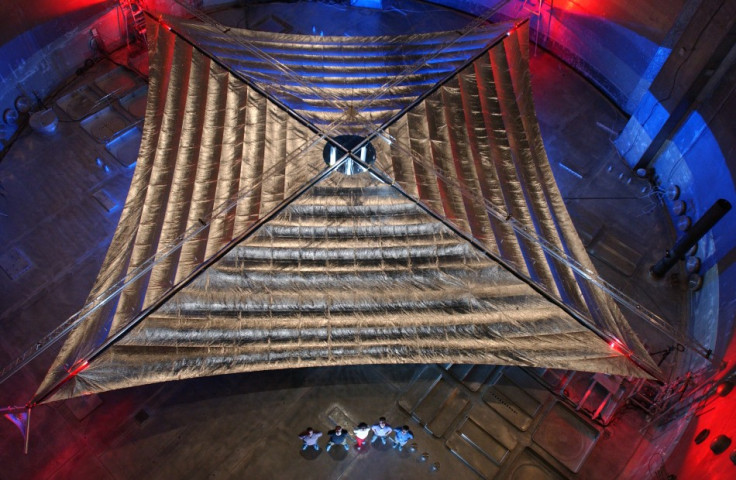Sailing Ship in Space Puts Britain at Cutting Edge: Sunjammer Interview

A British scientist working on a revolutionary space ship has told of his excitement at the prospect of sailing through the solar system.
UK experts are currently working with NASA to blur the lines between science fact and science fiction.
A team from Imperial College in London is helping build a totally new type of space craft, which draws upon centuries-old technology to push back the frontiers of space travel.
Prof Jonathan Eastwood is one of those working on a gigantic space sail - which could yet power the next generation of space craft.
Named the Sunjammer, the mould-breaking tool essentially works on the same principle as the sails on ships in the high seas.
The difference is that whereas ship sails harnessed wind power to once send explorers such as Christopher Columbus to America, the Sunjammer in space shall rely completely upon sunlight.
It is the same principle as wind acting upon the sails of a ship in water in order to power it through the waves. But instead of wind power, the sail works by using particles sent streaming into space from the sun to push the craft through the solar system.
What is revolutionary is that this means there is no need to carry fuel on board because the sun provides an unlimited supply of fuel.
This notion of gently gliding through space on gusts of cosmic particles is what makes the solar sail appeal to the romantic side of scientists and amateurs alike.

Sunjammer could yet become the best way to traverse the solar system after its maiden test flight next year.
Due to be launched next year, Prof Eastwood's team is building an instrument to measure background radiation.
But with the deadline approaching, the pressure is on to deliver the instrument to NASA.
He called it an "incredible project."
Eastwood said: "It's just the idea of sailing into space. It's been science fiction for a long time, so to be really doing it is like science fiction meets reality.
"This mission will just use sunlight so, if it is successful, then it will open a whole realm of travel for exploring the solar system."
For this mission, economy is everything and keeping down weight is key, as Prof Eastwood explained.
"We were approached by NASA to provide this instrument because we build the smallest ones in the world," he said.
"The pressure of the sun is very low, so you want the spaceship to be as light-weight as possible.
"We are building the instrument to measure the magnetic field. We have had to adapt equipment from a previous mission. Right now we are designing it and shall give it to NASA early next year."
As well as the potential to revolutionise space travel by enabling craft to ditch gigantic fuel tanks for good, the Sunjammer also has possible uses for satellite monitoring.

Prof Eastwood explained: "There's talk about how we could use a solar sail to position a satellite over the poles of the earth. We could use it to monitor polar ice caps in more detail and the Sunjammer is also going to provide lots of information about solar storms."
Eastwood hailed the project as a triumph for British innovation.
"Having the opportunity to do this here shows it is an unsung success story for Britain," he said. "I have every confidence that the team will do it and the results shall be pretty fantastic."
Amateur space enthusiasts are promised a treat when Sunjammer launches next year. The solar sail will carry a camera on its maiden test voyage and dent back TV images in real time.
© Copyright IBTimes 2024. All rights reserved.







